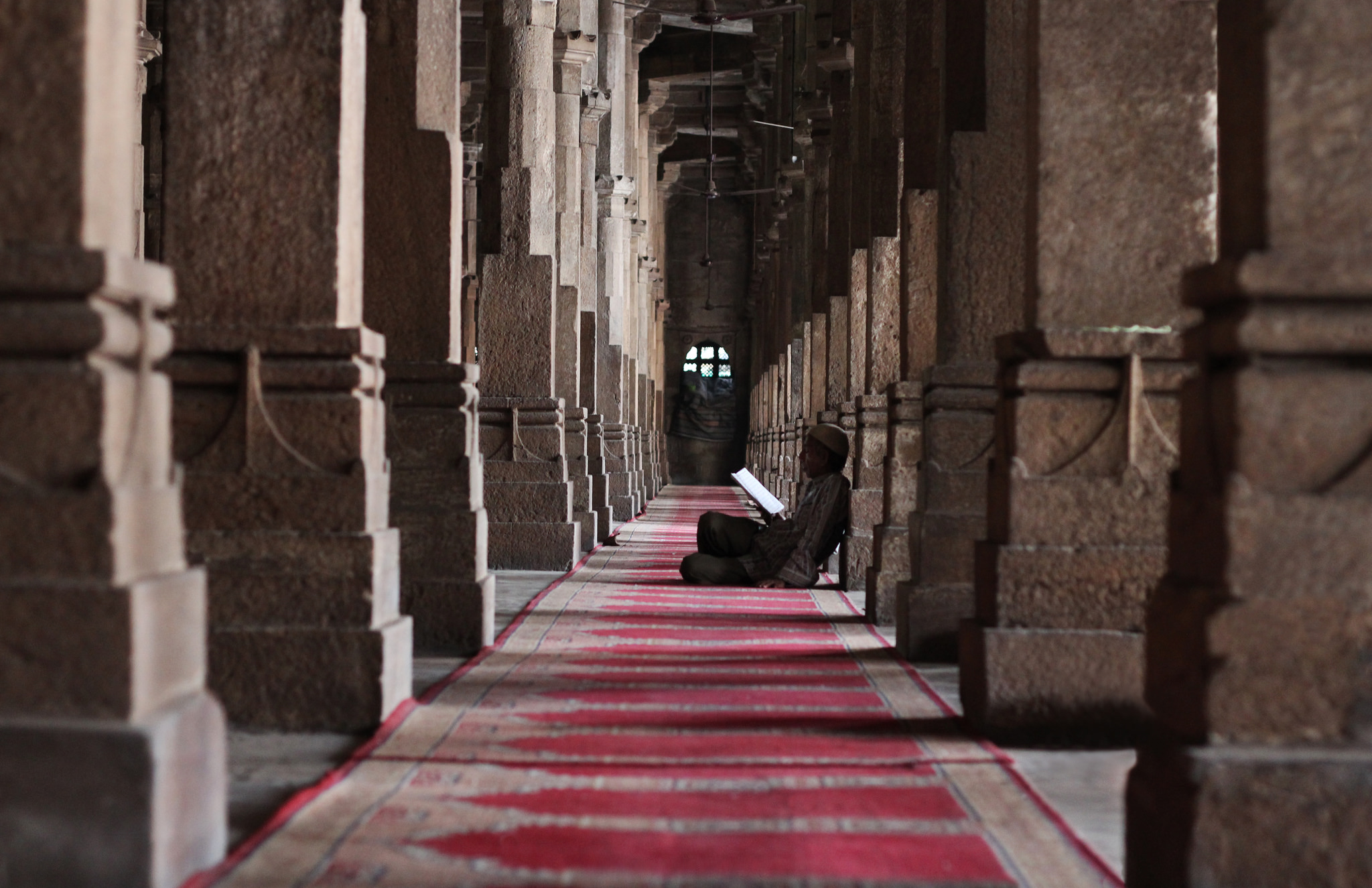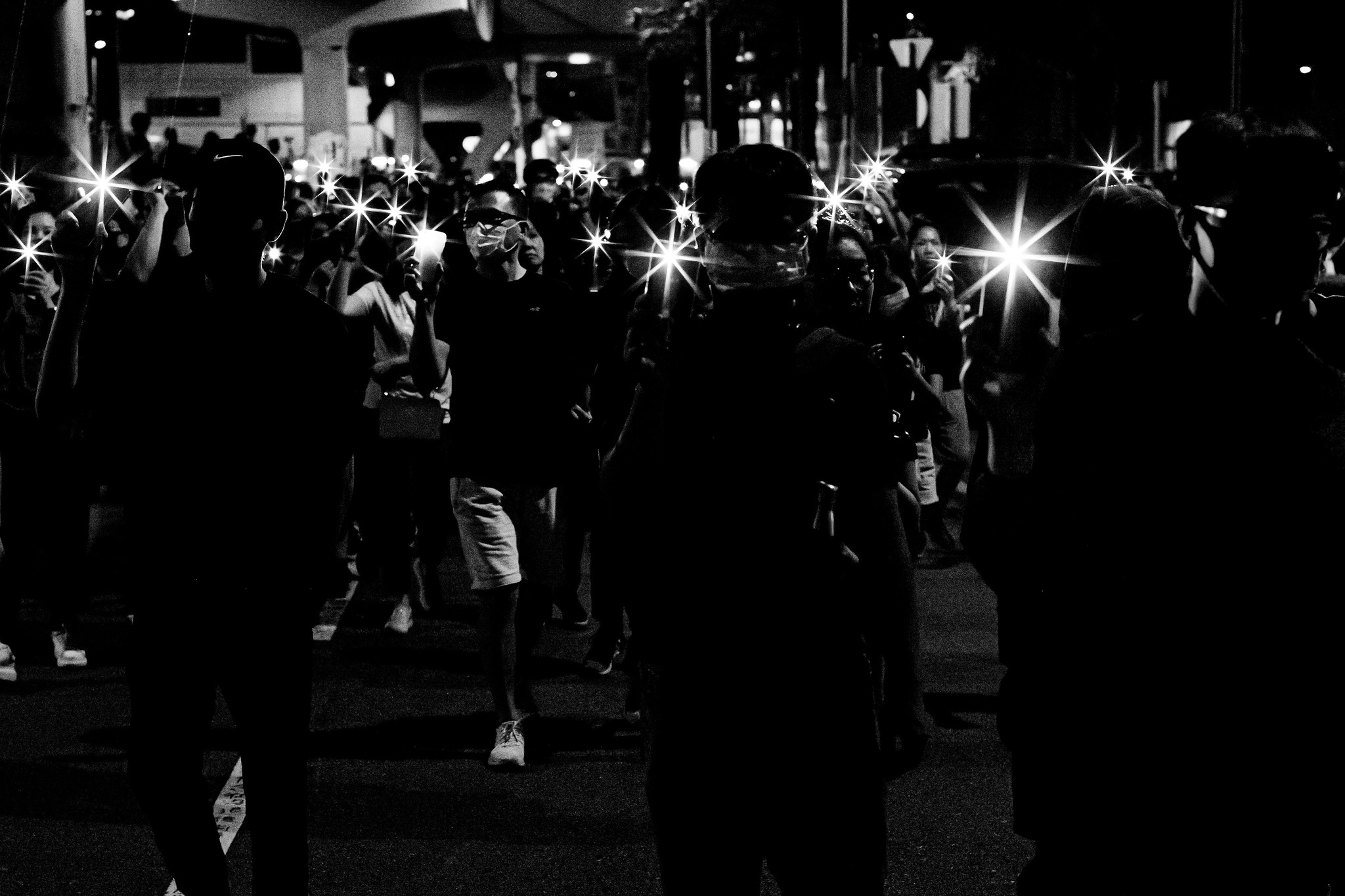<< From the AltMuslimah Archives >>
It is jummah and I’m right on time, ready to listen to the entire khutbah. Today I’ve chosen to sit in the middle, closer to the back, hoping to remain inconspicuous. I’ll soon regret this decision. The khutbah begins, and ten minutes later, Abdullah saunters in. As luck would have it Abdullah plants himself right in front of me, obstructing my view of the imam and leaving me to crane my neck if I want a peek at our speaker.
As Abdullah bows for his first sajda, or prostration, a full moon comes into my field of vision, and it’s definitely not the Ramadan moon. I’m doing my best to enter into a peaceful, focused state of mind and connect with God, but four feet in front of my face is someone’s rear end.
Well, Abdullah felt a breeze at some point during his first rakat (bow), so for the second rakat, he hiked up his $70 skinny jeans—to my dismay, he pulled his pants up with a bit too much vigor. Now, instead of putting his rear end on display for all the unsuspecting men in the prayer rows behind him, Abdullah has managed to yank his jeans up so high, that the audience can see a distinct bulge delineating his manhood.
Enough is enough. This experience was the last straw for me. This is nudity, nothing else, during prayer services in a house of worship. It is obscene, vulgar, and occurs on a regular basis in mosques around the country, specifically in men’s sections. If we have been fortunate enough to never have seen skin, then, at the very least, we all have had our fair share of boxers, briefs, outlines and everything in between. We are all aware of this, but at the risk of broaching a potentially embarrassing, crass subject, we remain silent.
More importantly, this is not a set of isolated instances or something that occurs once a month. The fact is, this is a reality of the men’s section, literally, all the time and everywhere. We need to ask ourselves a very serious question: are men so far removed from the concern of modesty that mass complacency and group-think have allowed this phenomenon to prevail across American mosques and elsewhere? The men’s section has become a place where a very large number of attendees have this issue – whether it’s undergarment lines seen through tight pants as the most benign form, to the more egregious examples I just mentioned.
Now just imagine if such routine immodesty was seen in the women’s section of a mosque. It isn’t a far stretch to imagine that restraining orders would be served and special announcements would be made.
Double standards among men and women at mosques abound, but it amazes me how we allow this one to continue unchecked. Often, the most egregious misbehaviors slip through the cracks because they require the most effort, or courage, to address. Something is very wrong when women are scolded for nail polish and stray strands of hair that peek out from beneath their hijabs, yet men escape rebuke despite such outrageous nonsense. Have we forgotten that Islam’s emphasis on modesty applies just as much to men as it does to women?
We have to come to terms with some basic facts – men’s western clothing, especially more “modern” body-hugging clothing, is neither modest nor conducive to prayer, especially the prostration portion of prayer. When we see people come to the mosque with thobes and other traditional, loose-fitting robes of various lengths over their work outfits, we like to think we’re stylish, progressive, and well-integrated with our khakis and tucked in dress shirts, but the fact is, traditional garments, such as thobes, are worn in the Muslim world precisely because they do such an excellent job of guarding one’s modesty, no matter whether you are standing, sitting, bending or prostrating.
If you are an Abdullah, then I ask you to please respect your fellow prayer-goers, as well as the sanctity of the mosque, and wear loose-fitting garb that does not delineate the shape of your body. If you are a brother and happen to sight a moon or boxers, then I ask you to please have the courage to approach the offender and politely say something. In fact let’s take an old homeland security line and turn it on its head, applying it to our mosques: “If you see something, say something.”
Imams, as our spiritual leaders in the mosque, have the largest responsibility to address this immodesty head-on. Whether you’re a newcomer who just decided to come back to the faith after years of absence or an old-timer with “bulge” issues, you are obligated to respect the integrity of a sacred space and those in it. You must not detract or distract in any way from the sanctity of the environment. Tolerance and patience are great virtues, but they should not deteriorate into complacency and acceptance of obscenity.
In discussions of mosques and gender issues, the rights of men are often, and perhaps rightfully so, overlooked. Just as women should demand and receive equal prayer spaces, quality child care and broad range participation at the mosque, men should have the right to pray without indecency in their faces. It is high time men do a little self-policing and turn their obsession with modesty in mosques away from the women and onto themselves.
Moein Khawaja is the Executive Director of CAIR-PA and a 2011 Fellow of the American Muslim Civic Leaders Institute. This article was originally published on AltMuslimah on March 2, 2011.
Photo Credit: Sunil Krishnan




